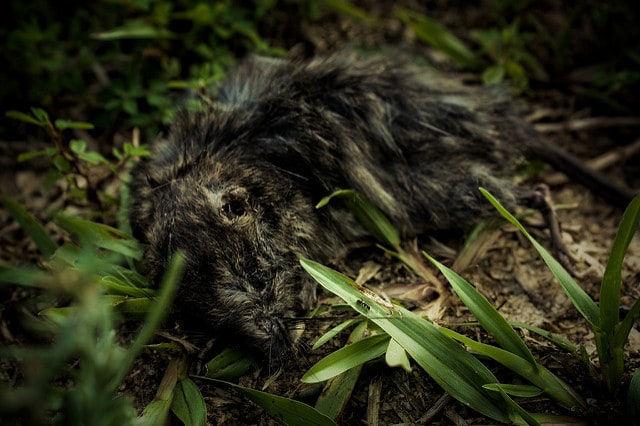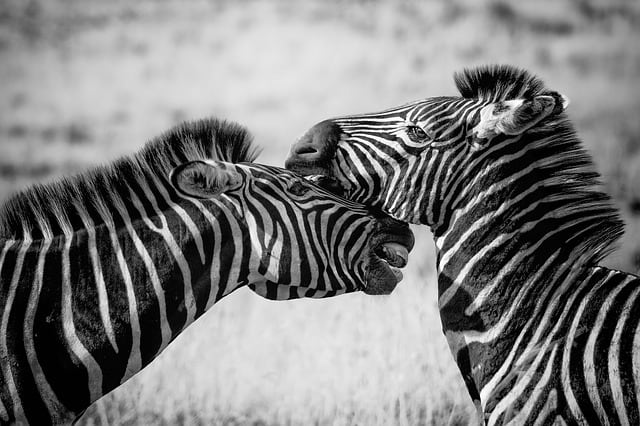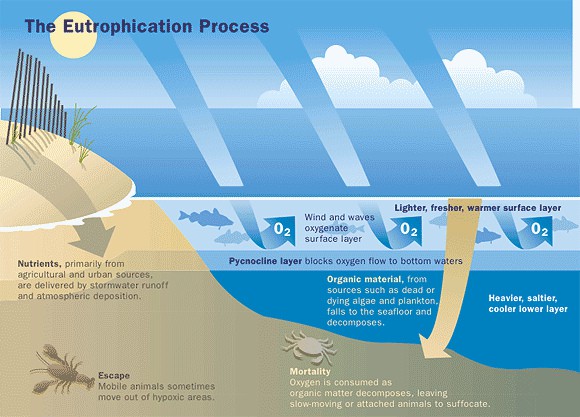Causes, Effects and Process of Biomagnification

Biomagnification stands for Biological Magnification, which means the increase of contaminated substances or toxic chemicals that take place in the food chains. These substances often arise from intoxicated or contaminated environments. The contaminants include heavy metals namely mercury, arsenic, pesticides such as DDT, and polychlorinated biphenyls (PCBs) compounds which are then taken up by organisms because of the food they consume or the intoxication of their environment.
These materials are highly present in a variety of household and industrial chemicals. The harmful substances then build up inside the organism’s cells. When organisms in the higher food chain consume the organisms containing the toxins below their trophic levels, the toxins gradually become concentrated in the higher food chain. Because this is a repetitive process in the ecosystem and throughout the entire food chain, the higher organisms are the ones that will accumulate most of the toxins.
According to Encyclopedia,
“Biomagnification (or bioaccumulation) refers to the ability of living organisms to accumulate certain chemicals to a concentration larger than that occurring in their inorganic, non-living environment, or in the case of animals, in the food that they eat.“
Causes of Biomagnification
The release of toxic chemicals and pollutants into the environments such as the seas, air, and land results in the accumulation of toxins and harmful substances in the environment. The concentration of these toxic chemicals and pollutants seem to be very low when released in different environments, it eventually accumulates and gets absorbed by lower organisms in the food chains such as fish, earthworms, and plants. When the lower organisms are eaten by other organism and the process goes up the trophic levels, biomagnifiaction occurs.
- Agriculture
Agricultural pesticides, fungicides, herbicides, and chemical fertilizers, among other agricultural chemicals are highly toxic and often find way into the soils, rivers or lakes and the seas through surface storm water runoff. The primary agricultural inputs including pesticides, industrial by-product wastes, some fertilizers, and specific agrochemical products contain traces of heavy metals such as arsenic, cadmium, mercury, copper and lead. These substances cause severe health impacts to humans and aquatic animals such as fish when indirectly ingested and accumulate in the body tissues.
- Organic contaminants
Manures and Biosolids frequently contain nutrients including nitrogen, carbon, phosphorus and nitrogen. Furthermore, because they are industrially processed, they may also have within them contaminants such as personal care products (PPCPs) and pharmaceuticals. These products have been found in human and animal bodies and are believed to have negatively health impacts to wildlife, animals, and humans.
- Industrial manufacturing activities and pollution
The manufacturing processes of industries indirectly or directly release toxic and harmful substances which find a way to the soils, rivers, lakes and oceans. Industrial processes pollute the environment in several ways by emitting or discharging toxic pollutants into the environment which find way into the food chain, leading to biomagnifications.
- Mining activities in the ocean
Mining activities in the deep sea is to extract minerals and metal ores like zinc, cobalt, silver, aluminum and gold destroy the oceans and the coastal regions as the mining processes generate scores of sulfide and selenium deposits in the waters. The toxicity levels build up and are absorbed by ocean creatures which are then consumed by organisms in the higher trophic levels of the food chain.
Effects of Biomagnification
- Impact on human health
Humans become more susceptible to cancers, liver and kidney failure, respiratory disorders, birth defects in pregnant women, brain damage, and heart diseases are a result of mercury, cadmium, lead, cobalt, chromium and other chemical poisoning. For instance, diseases like hepatitis and cancer have been attributed to consuming seafood that has been poisoned by mercury and polycyclic aromatic hydrocarbons (PAHs).
- Effects on reproduction and development of marine creatures
The various toxic chemicals and elements accumulate in the vital organs of the various aquatic creatures affecting their reproduction and development. For instance, seabird eggs are laid with thinner shells than normal, and can result in the birds crushing their eggs instead of incubating them. Selenium and heavy metals such as mercury also affect the reproduction of aquatic creatures such as fish as it destroys their reproductive organs. Besides, PCB’S (polychlorinated biphenyls) also biomagnifies and impairs reproduction and is considerable high in aquatic systems.
- Destruction of the coral reefs
The coral reefs are destroyed by cyanide which is used in leaching gold and in fishing. The reefs provide for spawning, feeding, and dwelling grounds for numerous sea creatures. When destroyed, the survival of aquatic creatures is highly compromised.
- Disruption of the food chain
Many sea creatures depend on the natural food chain for survival. When chemicals and other toxins are carried into the soils, rivers, lakes or oceans and taken up by various organisms, it disrupts the interconnected relationships within the food chain.
It happens when small animals ingest or plants absorb the toxic elements after which they are eaten by bigger animals, consequently, affecting the entire natural food chain. The creatures or plants intoxicated with substances such as mercury, copper, chromium, selenium and cobalt may also be consumed by humans and top animals in the food chain leading to susceptibility to diseases, reproductive disorders, and even deaths.
Process of Biomagnification
Biomagnification process occurs when certain toxic chemicals and pollutants such as heavy metals, pesticides or polychlorinated biphenyls (PCBs) compounds go up the food chain by working their way through the environment and into the soil or the water systems after which they are eaten by aquatic animals or plants, which in turn are consumed by animals, humans, and large birds. Eventually, these substances increase in concentration in the organisms as they move up the food chain because they are slowly excreted or metabolized/broken down.
Here is an explanation showing the process of biomagnification:
- Release of toxic chemicals and pollutants into the environment
The process begins with the release of toxic chemicals and pollutants into the environment and eventually works their way into soils, rivers or lakes, and the seas. The concentration of these toxic chemicals and pollutants seem to be very low when released in different environments. They are very minute even in terms of weight.
- Phytoplankton
Phytoplankton refers to small plants that float in the seas that normally absorb toxins. Once absorbed, the toxins stay in their tissues without being excreted or broken down. With time, the toxins accumulate to high concentrations up to 200 parts a trillion which represents a toxin accumulation increase by about four fold.
- Zooplankton
Zooplankton refers to small marine animals that float in the seas. They consume the phytoplankton and thus take in the toxin. The toxins stay locked in the organism’s tissue without being excreted or broken down. Over time, the toxin concentration increases up to two parts per billion which represents about a ten-fold increase over the previous concentration.
- Small fish consume the zooplankton
Whenever the small fish feed on the zooplanktons, they consequently take up the toxins which get absorbed in their fatty tissues. As a result, accumulation occurs and the concentrations build up to about 20 parts per billion which is another ten-fold increase.
- Large fish graze on the smaller fish
Again, when the large fish graze on the smaller fish for food, they consume the toxins that accumulate in their fatty tissues. The concentrations become higher up to ranges of 80 to 100 parts per billion. This is about four to five fold increase in the toxic levels.
- The top food chain organisms consumes the fish
The organisms at the top of the food chain including the marine mammals such as dolphin, sea birds, and humans gradually build up the toxins in their tissues such as their liver when they consume the large fish. The levels of concentrations here increase to the highest ranges of 10,000 to 15,000 parts per billion. The results impact the animal’s fertility and make them vulnerable to diseases as they interfere with the normal functioning of vital organs.






